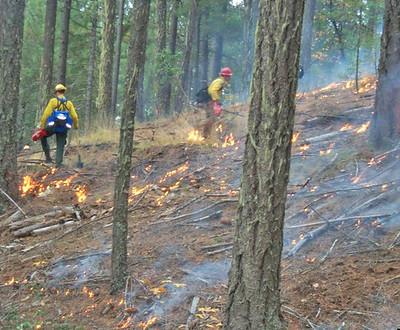BLM plans prescribed burn in Weaverville Community Forest
Organization:
BLM Office:
Media Contact:
REDDING, Calif. — Fire crews from the Bureau of Land Management are planning a prescribed broadcast burn on Friday, Feb. 11, in the Weaverville Community Forest on the west side of the community of Weaverville. Burning in the 39-acre project area will take place only when weather conditions allow for safe and successful burning.
The project area is along West Weaver Road, about 2.5 miles south of the intersection with Oregon Street. Smoke will be visible from Weaverville. Forecast light east winds are expected to carry smoke away from the community.
“This burn, like others we have conducted in the community forest, is designed to improve wildfire resilience in the wildland-urban interface, which is the area where homes are close to wildlands,” said Jennifer Mata, manager of the BLM Redding Field Office. “The burn will promote growth of fire resilient plants and benefit forest management objectives including production of forest products and public access.”
Crews from the Forest Service, National Park Service and CAL FIRE will assist in the burn. Crews will monitor and patrol the area during and after the project.
The Weaverville Community Forest contains about 15,000 acres under the jurisdiction of the BLM and Forest Service. The two federal agencies work with the Trinity County Resource Conservation District to jointly manage the forest for recreation uses, timber production, and a community firewood source. Community residents value its recreational trail network and visual aesthetics.
More information is available from the BLM Redding Field Office, 530-224-2100.
The BLM manages about 245 million acres of public land located primarily in 12 western states, including Alaska, on behalf of the American people. The BLM also administers 700 million acres of sub-surface mineral estate throughout the nation. Our mission is to sustain the health, diversity, and productivity of America’s public lands for the use and enjoyment of present and future generations.

